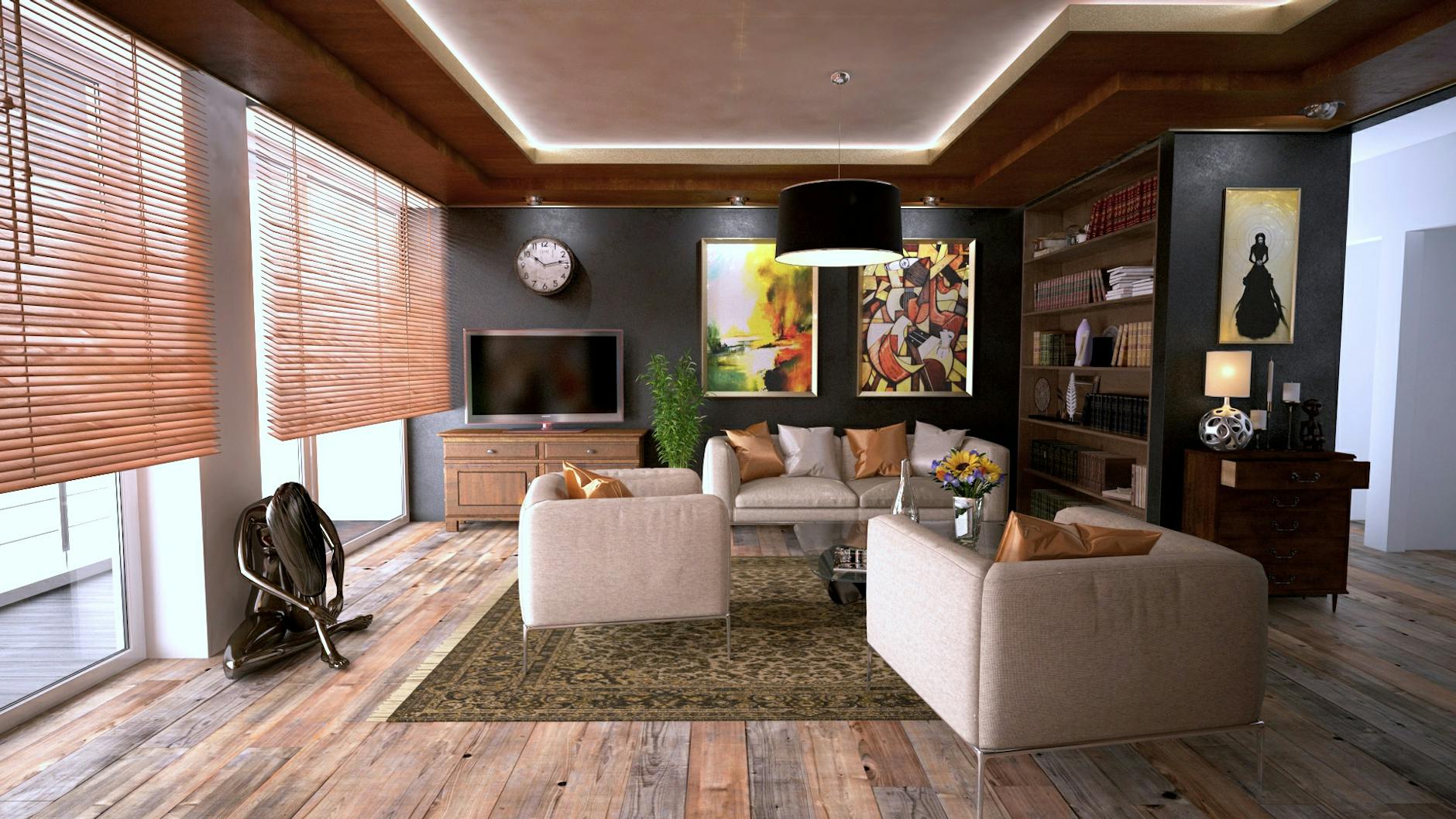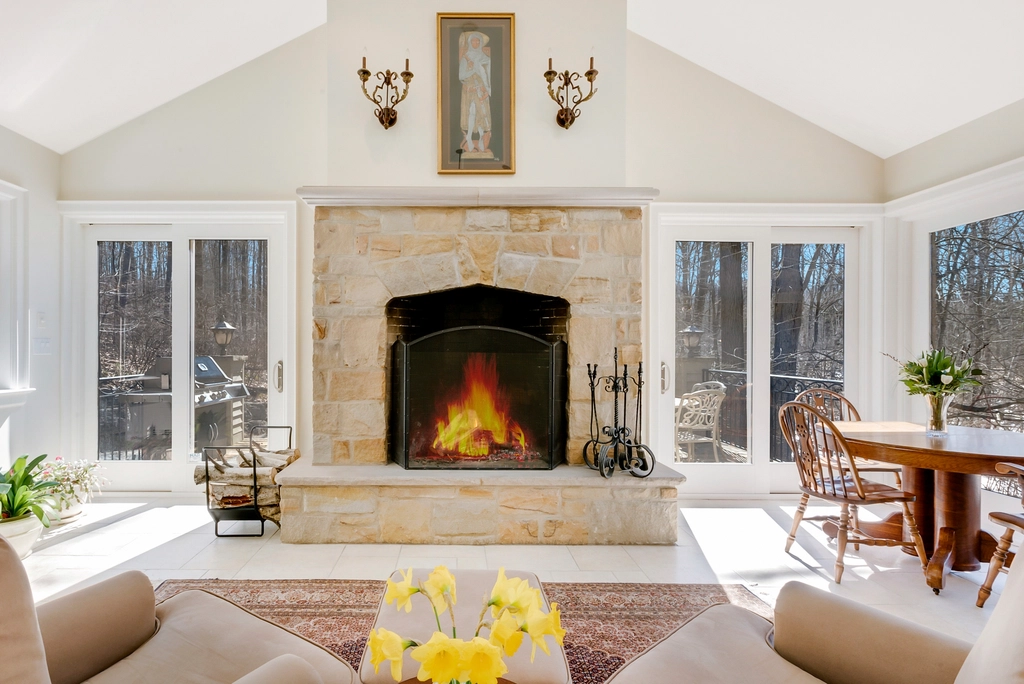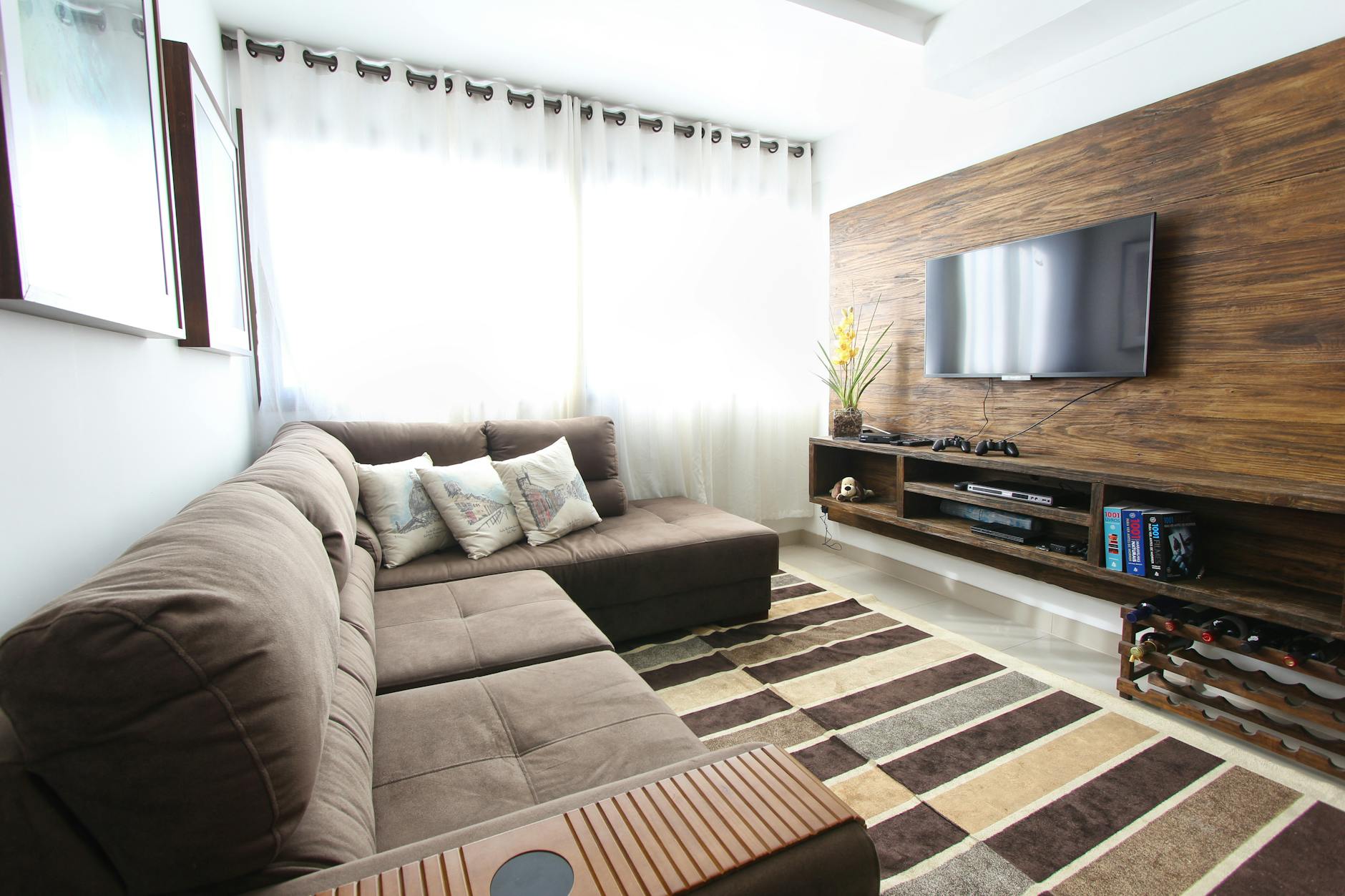Your living room is more than just a space—memories are made, conversations flow, and relaxation takes center stage. Whether you’re a design enthusiast or a novice, we’ve curated many ideas to help you create a living room that reflects your personality, lifestyle, and comfort. Let’s explore unexpected decorating tips, practical solutions, and beautiful aesthetics.
Simple Living Room Magic: Tips and Ideas for a Timeless Space
1: Combine Different Styles

Blend Modern and Vintage:
- Picture a sleek, contemporary sofa paired with well-worn, vintage armchairs. The juxtaposition creates an intriguing balance—like a conversation between eras.
- Consider plush velvet upholstery for the sofa and leather or rattan for the chairs. The tactile contrast adds depth.
Texture Play:
- Experiment with fabric textures. Imagine a plush velvet sofa alongside a woven jute rug or a nubby tweed armchair.
- Mix soft and hard textures: velvet against smooth wood, or leather against metal accents.
Color Harmony:
- When mixing styles, choose the right color scheme and consider color harmony. Opt for complementary or analogous colors to connect the pieces.
- For example, pair a navy blue sofa with mustard yellow armchairs, and add coordinating throw pillows.
2: Statement Mantel: Transform Your Fireplace

Tile Drama:
- Instead of traditional mantel decor, think tiles. Imagine star-patterned ceramic tiles surrounding your fireplace. The celestial motif draws attention and sparks conversation.
- Opt for handmade or artisanal tiles for a bespoke look.
Layered Decor:
- Arrange art, mirrors, and sculptural objects on the mantel. Create depth by varying heights and textures.
- A large mirror reflects light and visually expands the space. Consider an antique or ornate frame.
Seasonal Switch:
- Change the mantel decor seasonally. In summer, display seashells, beachy accents, and fresh flowers.
- In winter, opt for candles, cozy textiles, and evergreen branches. Add fairy lights for a magical touch.
3: Play with Patterns: Bold Choices

Mix and Match:
- Don’t limit yourself to one pattern. Imagine floral pillows on a striped sofa, paired with a geometric rug.
- The key is balance—vary scale and intensity. If your rug has large florals, choose smaller-scale patterns for pillows.
Unexpected Places:
- Think beyond textiles. Consider patterned wallpaper, painted accent walls, or even a boldly patterned ceiling.
- It’s like wrapping your room in art. Geometric wallpaper behind the TV or a floral ceiling can be delightful surprises.
Color Consistency:
- Tie patterns together with a consistent color palette. If your rug has pops of teal, echo that hue in your throw pillows or curtains.
- Use neutrals as grounding elements to prevent visual overload.
4: Natural Elements: Bring the Outdoors In

- Introduce potted plants—ferns, succulents, or a fiddle-leaf fig tree. They purify the air and add life to your living room.
- Consider hanging planters or a vertical garden for limited floor space.
Woven Wonders:
- Incorporate woven baskets as storage or wall decor. They evoke a cozy, bohemian vibe.
- Hang a macrame plant hanger or display woven baskets on a gallery wall.
Wood Accents:
- Wooden coffee tables, side tables, or shelving units bring warmth and a touch of nature.
- Opt for reclaimed wood for an eco-friendly style. Look for interesting grain patterns and natural finishes.
Invest in Bold Fixtures
- Lamps aren’t just functional; they’re sculptural art. Picture a curvy ceramic lamp on a side table.
- Look for unique bases—geometric, organic, or abstract. The right lamp can be a conversation starter.
- Related; What Is Biophilic Design? 5 Simple Ways to Incorporate This Style
faq
what is the correct order to decorate a room?
Decorating a room involves a thoughtful and systematic approach to transforming it into a comfortable and visually appealing space. It begins with careful planning and layout, where measurements are taken and furniture placement is mapped out on paper or digitally. Once the layout is established, the next step is preparing the surfaces, whether through painting the walls or applying wallpaper to set the backdrop for the room’s ambiance. Flooring comes next, where rugs are laid or existing floors are cleaned and polished to enhance the room’s foundation.
Furniture placement follows, focusing on larger pieces like sofas and tables to establish the room’s functional layout and flow. Window treatments are then installed, such as curtains or blinds, to complement the room’s style while also providing privacy and light control. Lighting is crucial and installed next, ensuring both overhead lights and lamps are strategically placed to illuminate the room effectively.
As the room takes shape, decorative items such as pillows, artwork, and vases are added to inject personality and tie together the overall theme. Functional items like electronics and books are integrated seamlessly into the design. Throughout the process, adjustments are made to ensure everything harmonizes well together, from color schemes to furniture arrangement. Finally, a thorough cleanup ensures the room is pristine and ready to be enjoyed. This step-by-step approach ensures that each element contributes to creating a cohesive and inviting living space tailored to personal tastes and functional needs.
how do you change the vibe of the room?
hanging the vibe of a room involves a combination of strategic adjustments to its visual, tactile, and sensory elements. Start by considering the color palette; painting walls or introducing new accent colors (paint colours you should avoid) through textiles like curtains or cushions can dramatically alter the room’s mood. Lighting plays a crucial role as well—adjusting the brightness and type of lighting can shift the atmosphere from cozy and intimate to bright and energetic.
Rearranging furniture not only improves functionality but also changes the flow and feel of the space; creating new seating arrangements or opening up pathways can refresh the room’s dynamics.
Introducing different textures through fabrics and materials adds depth and character; for instance, soft textures like velvet evoke a sense of luxury, while natural fibers like linen or rattan impart a more relaxed vibe. Decorative elements such as artwork, plants, or meaningful accessories can be strategically placed to enhance the desired ambiance. Scent can also influence perception; using candles, diffusers, or fresh flowers with scents like lavender for relaxation or citrus for invigoration can further transform the room’s atmosphere.
By carefully orchestrating these elements—color, lighting, texture, décor, and scent—you can effectively change the vibe of any room to better suit your mood or desired atmosphere.
how to decorate a room for beginners
Decorating your living room can be an exciting project, whether you’re starting from scratch or looking to refresh the space. Here’s a beginner’s guide to help you get started: “The Beginner’s Guide to Decorating Living Rooms“
